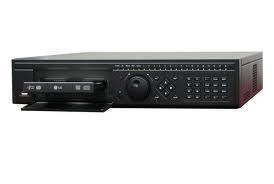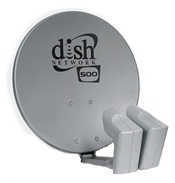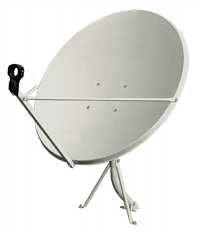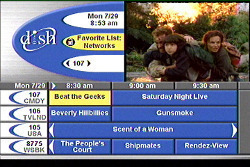A DVR, which is also known as a Personal Video Recorder (PVR) is basically a digital replacement for the video cassette recorder (VCR) for recording TV programs. The key difference between a VCR and a DVR is that the latter can record TV programs digitally. Apart from the advent of High Definition TV (HDTV), the rise of the Digital Video Recorder (DVR) is considered a major development in television technology.
Key Benefits of Using DVR
- Live TV can be paused and continued, since DVRs automatically record about an hour of the show being viewed.
- It is possible to rewind live TV, and replay part of what was already shown.
- An entire series of TV episodes can be recorded using an automatic facility of the DVR.
- An on-screen programming guide that can be easily updated via a internet connection is usually provided with the DVR.

DVR Types
There are four main types of DVRs: a standalone unit, a DVR that is integrated into a set top box provided by a cable or satellite TV company, portable DVRs and DVRs that are created using components and software in a computer. Every DVR has certain components that are common to all types:
- A hard drive for storing the videos. In the case of software DVRs, the personal computer’s hard drive does the storage.
- A graphical user interface for controlling the DVR. This could also be done with the help of a remote control.
- A programming guide for scheduling recordings. This does away with the need to manually enter the intended times and dates of recordings.
- An Internet connection for automatically updating the programming guide.
Standalone DVRs
Stand alone DVRs have been made popular by brands such as TiVo which can be bought from electronic stores and hooked up to most TV sets. These DVRs offer large storage capacities, usually coming in 30 or 60 GBs, as well as fully functional TV viewing guides so that users can easily record their favorite show. Standalone DVRs usually cost a one-time fee for the purchase of the device and then an additional fee for each month of service, which includes an updated listing guide and features such as TiVo understanding your viewing choices and automatically recording preferred shows. Most TiVos range from about $150 to $300 for the device and less than $20 per month for the TV listing subscription fee.
Set Top Boxes with DVR Capability
Cable and satellite TV companies also offer DVRs to many of their customers. These DVRs come with large storage capacity for recording or storing TV shows and movies at home to watch at a later time. These DVRs are usually built into set top boxes, so one box fulfills all your cable or satellite TV needs. Most cable and satellite TV companies allow their subscribers to rent these DVRs directly from them, usually for a small monthly fee. There is no additional membership for TV listing services.
One example of such a device is Scientific Atlanta’s Explorer 8000HD, which can be rented from a cable company.
A DVR is more powerfulwith an HDTV satellite system if it is included in the satellite receiver. An example of this is DIRECTV, whose HDTV receiver can come integrated with a TiVoDVR.
Computer DVRs
Computer DVRs are one of the newer ways many people are recording and watching their favorite TV shows. Broadcast TV, cable TV or satellite TV can be obtained on a computer via the TV tuner card. Computer DVRs use the Internet to find TV listings. The tuner card can pipe in the video into the computer and store it on the computer’s hard drive. This is quite possibly the most affordable way to have a DVR and computer DVR users are often very satisfied with it.
There are various software and hardware items available to turn PCs with Windows, Linux and Mac OS X into software-based DVRs. This option is popularly accepted by lovers of the ‘home theater PC’ concept.
DVRs for Windows
Both free and proprietary software applications are available for windows users of DVRs. The free ones include GB-PVR and Media Portal. The paid ones include SageTV and SnapStream Beyond TV. The Windows Media Center is a DVR program that comes preloaded with Windows XP’s Media Center Edition. It also comes included with both the Windows Vista’s Home Premium and Ultimate Editions.
DVRs for Linux
DVR software applications for Linux are distributed free and open source, under the GNU General Public License. The ones commonly used include Myth TV, Freevo and LinuxMCE. The SageTV application is also available for Linux systems, but comes for a price.
DVRs for Mac OS X
MythTV works in the Mac OS X as well. Elgato Systems has a series of proprietary DVR software products made for Mac operating systems. Their TV tuners are known as EyeTV, and they are supplied with the latest versions of the EyeTV software developed by them.
Portable DVRs
Portable DVRs are growing in popularity because of their convenience of use and array of capabilities. Sometimes referred to as portable media devices, not only can they transfer and store videos, but copy music, photos and other types of media as well. Some portable DVRs usually consist of just a small function screen, USB port and hard drive. Others include an LCD screen to watch video directly on the unit. The SVAT CVP800 and Neuros MPEG-4 are examples of a portable DVRs available in the market.
Important DVR Features
When shopping for a DVR it is important to note the important features that a standard DVR should have, which are detailed below.
Storage Capacity
Storage Capacity is a key feature and should be an important selling point. The storage capacity of the hard drive in the DVR determines how much digital programming you can record, and this is measured in terms of the hours of programming. For instance, at a low resolution, you can store about 1 hour of video for every gigabyte (GB) of storage. DVR manufacturers usually specify between 30-hour to over 300-hour recording capacities. Such specifications can be misleading because the number of hours recorded depends on the quality of the video. Larger the hard drive and storage capacity, greater would be the cost of the unit.
High Definition Compatibility
If you have an HDTV, you will probably want to record shows that are compatible with it so that you can watch any recorded show in high definition on your HDTV. High Definition is currently the best format available; it is characterized by extremely high quality video and audio. While many DVRs do record in HDTV compatible resolution, some do not. The DVR’s specifications should have details about whether high definition recording is possible.
Dual Tuner
All DVRs usually allow you to watch a program stored on your TV set, while you record a new show. However, if you would like to watch a live TV show, while you record a new TV program on a different channel, you will need to make sure that your DVR has Dual Tuner technology. Dual tuner technology means that it has two tuners built in, one for tuning into the program that you are currently watching and a second tuner to tune to the channel that you would like to record.
Services and Software to Get the Most Out of Your DVR
One of the reasons people love their DVRs is the wide range of services and features that they offer. DVRs are much easier to use and are more powerful than just a normal VCR. Described below are three of the most commonly used services and software that many DVRs offer.
Season Pass
Season pass is available on TiVo as well as other DVRs (sometimes under a different name). This feature allows a user to record the entire season of a specific show with just one setting. This does away with the need for weekly reminders for preferred shows.
Wish List
Wish list is a term used by TiVo. This feature uses software and a user’s previous preferences to figure out and then record shows that may fit a user’s tastes. Most people think that a computer can’t figure out what they like, however, they often are extremely surprised and satisfied at the choices the device suggests.
Keyword Search
With the help of this feature, one can enter a keyword or phrase, for instance “bobsled”, and search TV listings to find programs that fit these criteria.




james braselton
hi there rick i too used too have the power pc 14 inch 1.33 ghz 512 mb ram 32 mb video ram and a 60 gb 4,200 rpm hdd and used for a dvr now useing macbook air 13.3 inch 2.13 ghz duo core 4 gb ram 256 mb video ram and a solide state flash storage no hard drive of 256 gb soo flash storage 4 times bigger then hard drives
Rick Deines
I currently have an analog TV, an analog DVD and an ATT internet via modem that tests between 77 and 93 mps on both my desktop Power PC G4, Mac OSX 10.4.11 and my laptop with the same OS a 1.33 GHz Power PC G4. We want to purchase a new HDTV either with internet capability, doesn’t have to be built in. Our goal is to be able to stream movies and TV shows without getting cable or satellite, ATT Universe etc. No DVR necessary. What do you recommend?
Harry Schueler
I would like to copy programs from my AT&T Uverse DVR to a TIVO Premier unit for playback, or vie-versa. How might I accomplish that?
Thanks